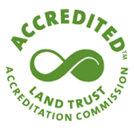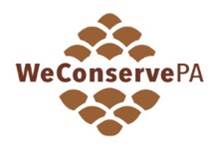As a Volunteer Land Steward, you are adopting the role as a Hollow Oak ambassador who will be representing the Land Trust while stewarding their site. As we conduct important work, we enact change, thus some confusion naturally arises. We aim to relieve confusion and live as collaboratively with our community as possible. Volunteer Land Stewards should inform Hollow Oak staff of any issues as soon as they become aware of them.
Becoming a Volunteer Land Steward
Steps
- Complete the attached agreement and questionnaire
- Review the relevant materials for your property, including baseline documentation, management plan, and map
- Schedule a property site visit with Hollow Oak staff
Performing Stewardship Activities
All of Hollow Oak’s sites are unique in their own way and require planning prior to the visit. Some sites are more remote where there is limited cell phone coverage while others are closer to nearby facilities. Being well prepared is vital to the safety of volunteers and the success of the stewardship program. Plan in advance for time required to travel to the site, carrying out tasks, and returning. Consider bringing some or all of the following items when performing stewardship activities
- Site map (printed or electronic)
- Cell phone
- Compass or GPS
- Camera
- Stewarding tools (work gloves, clippers, hand-saw, trash bag, flagging tape, notebook, and pen)
- Hollow Oak handouts (brochures and appropriate contact information)
- Items that identify you as a Hollow Oak Volunteer
- Plant or wildlife guides and binoculars
Check the weather to make sure conditions will not be hazardous. Always assess weather conditions again upon arrival and note the time you begin. Park in designated spaces – do not block gates, driveways, or roads. Once on site, walk the property and note any significant changes since your last visit. Look for signs of human activity (dumping, vandalism, trail deviation, etc.), ecological activity (evidence of wildlife, fish presence in streams, blow-downs, noxious/invasive weeds), geomorphic activity (changes in stream beds, erosion, woody debris, etc.). Take field notes and/or photos during your visit. If anything of concern is documented, thoroughly describe its location and extent in your monitoring report. Taking pictures can also be very useful for documenting disturbances, flora, and fauna. Taking pictures with a GPS camera or smart-phone (with location services enabled) will help staff find and fix any issues.
If necessary, perform light maintenance activities such as trail clearing and litter pickup. Any major maintenance that is needed, such as large scale invasive plant removal, trail reroutes, infrastructure installation or maintenance, and/or drainage improvements must be reported to Hollow Oak staff; Hollow Oak staff will advise on next steps.






